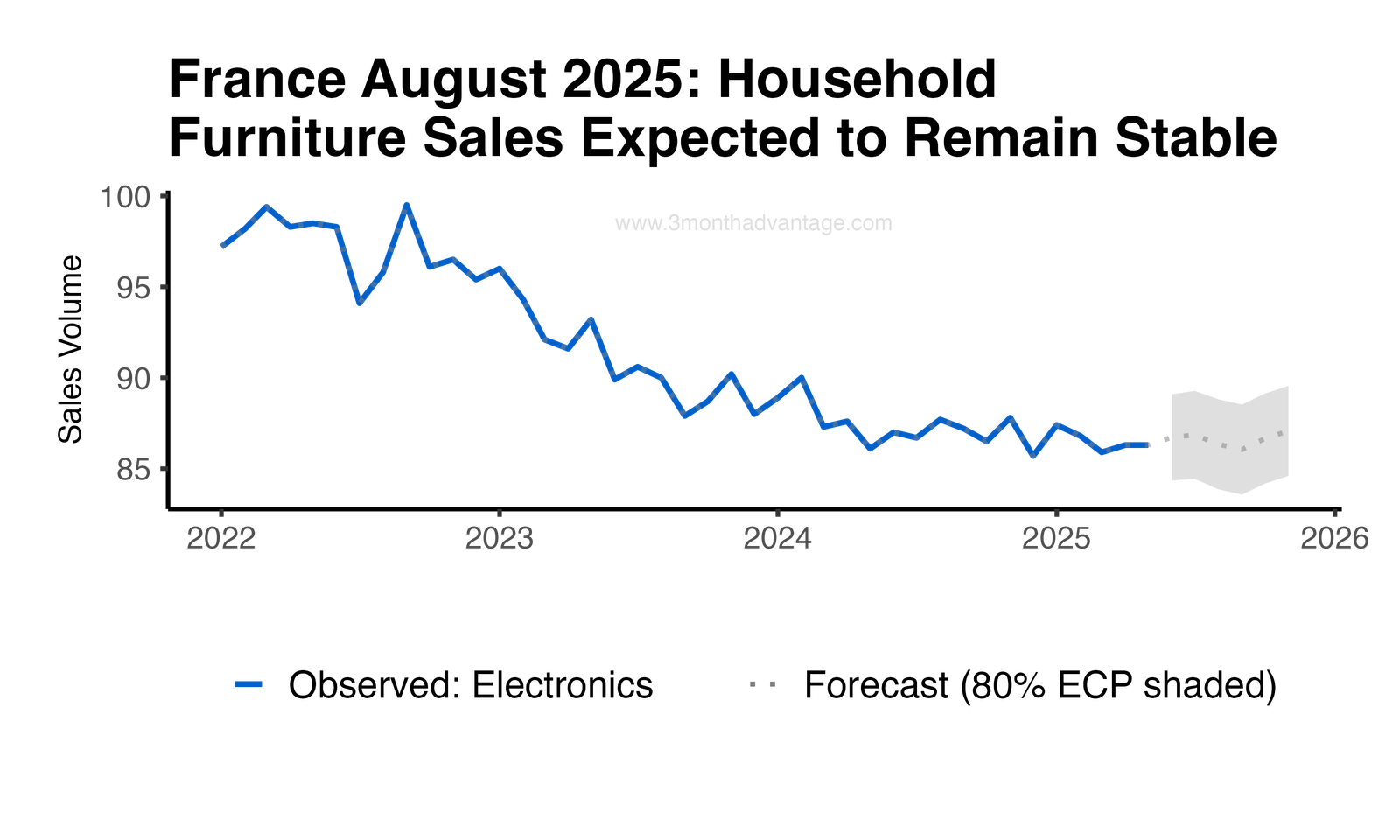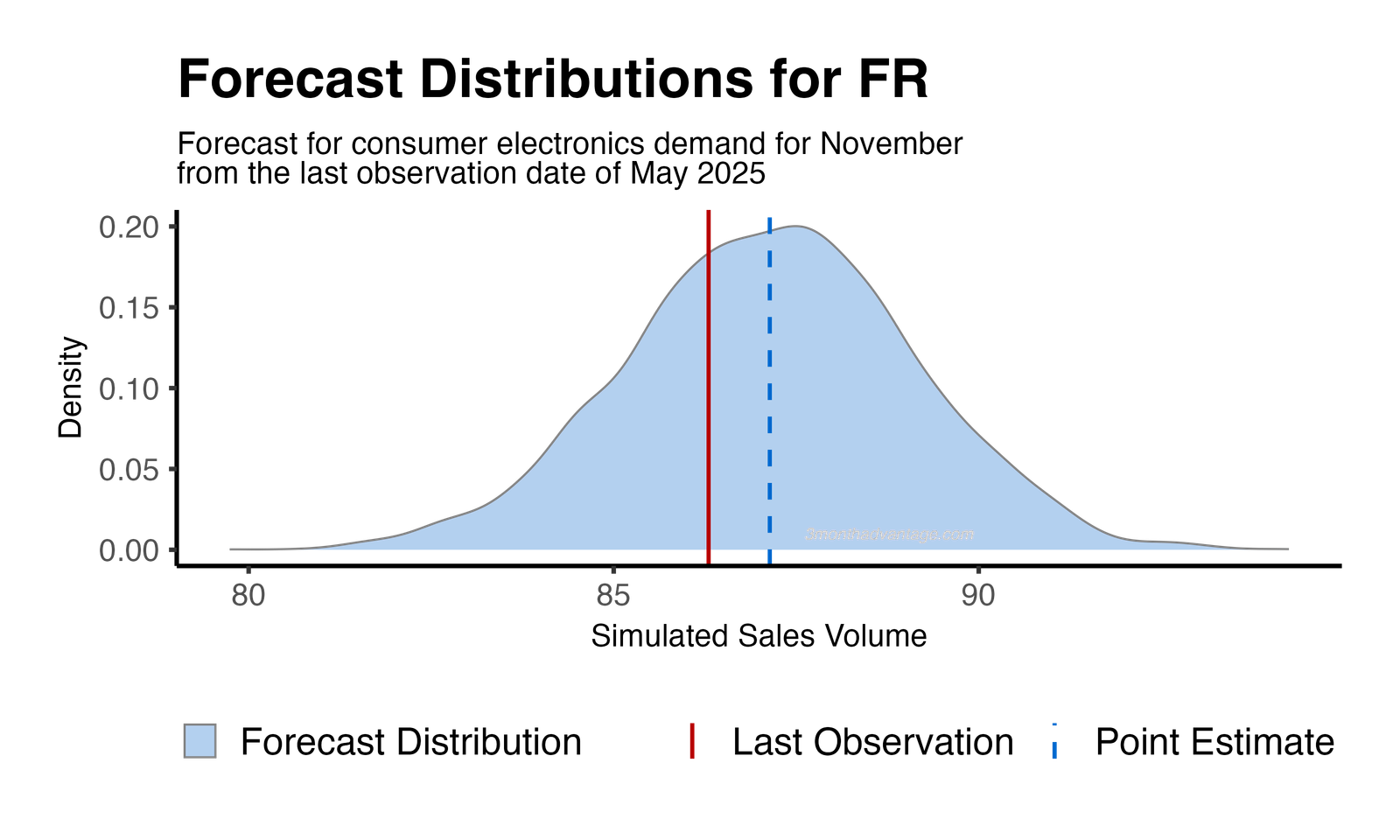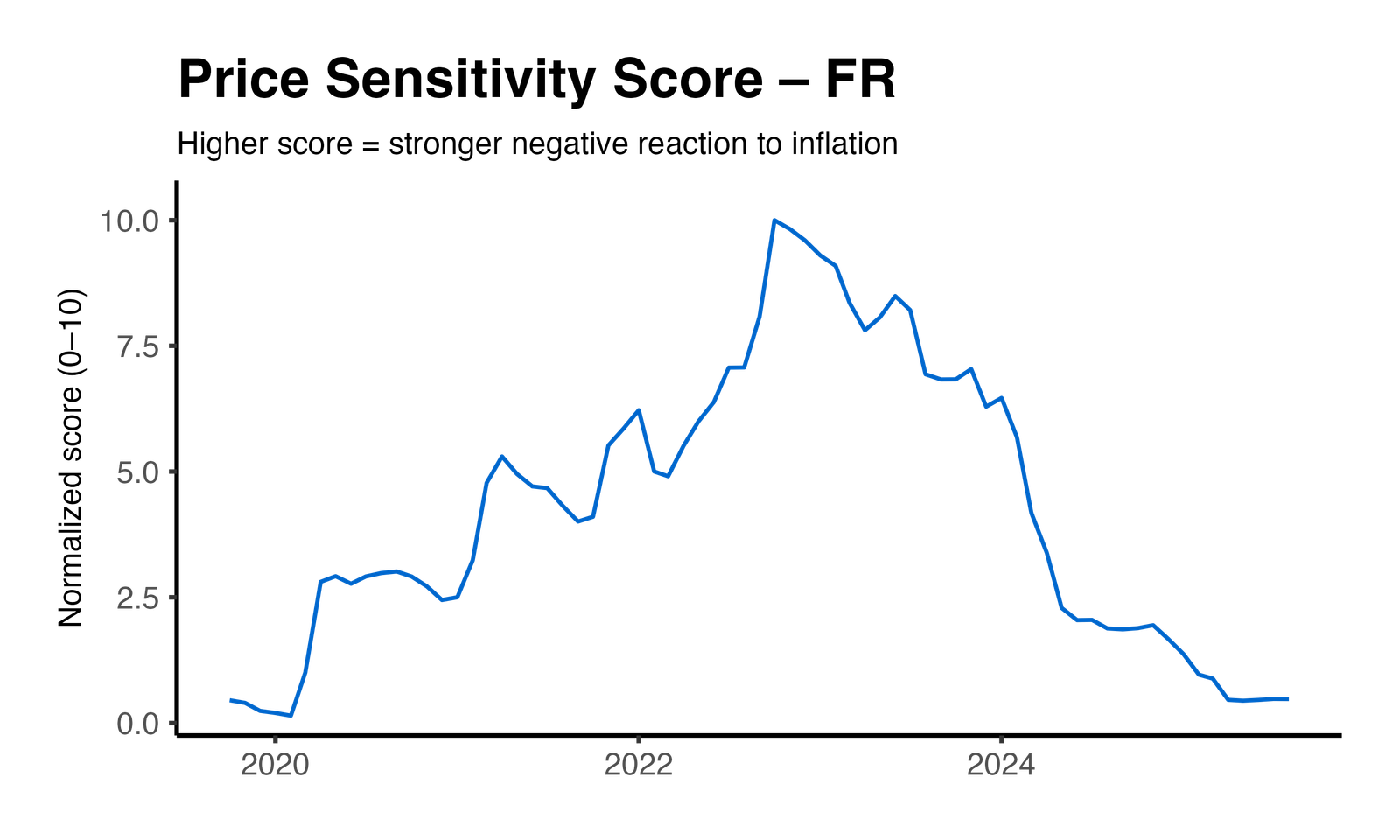
Household furniture and equipment retail sales are projected to grow by 0.0% in August. The forecasted month-on-month momentum for this category is -0.6%. Cumulative change by November is expected to reach 0.9%. Volatility across the three-month forecast horizon was 0.3, reflecting a year-on-year change of -0.24. Data refer specifically to the household furniture and equipment retail segment as reported by Eurostat.

The forecast for the household furniture and equipment retail sector indicates a 65% probability of increased demand by November 2025. The distribution curve highlights the most likely demand scenarios at its peak, with less probable outcomes represented in the tails. Businesses should prepare for potential growth by optimizing inventory and supply chain strategies while also considering contingency plans for less likely demand fluctuations.

In the past year in France, the normalized elasticity score saw a year-over-year change of -75%, indicating a slight increase in market sensitivity. At the same time, the year-over-year volatility of this score decreased by 71%, suggesting a slight reduction in market volatility. These figures are based on a multilevel model incorporating macroeconomic controls, with a statistically significant price-effect p-value of less than 0.01. The business implication of these results is that companies should consider more precise pricing strategies and targeted promotions to capitalize on the increased market sensitivity.

Method: Price Elasticity Insights